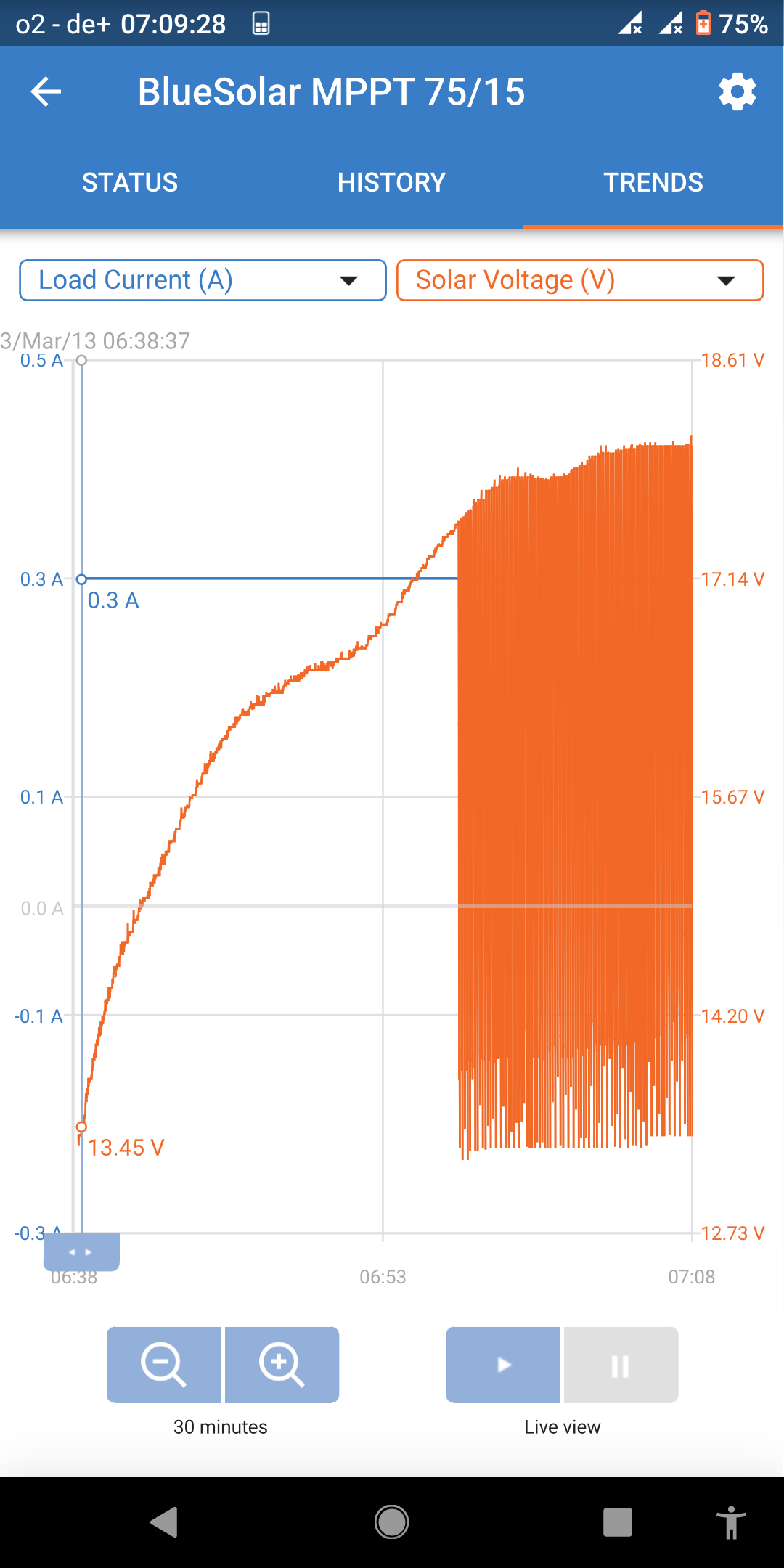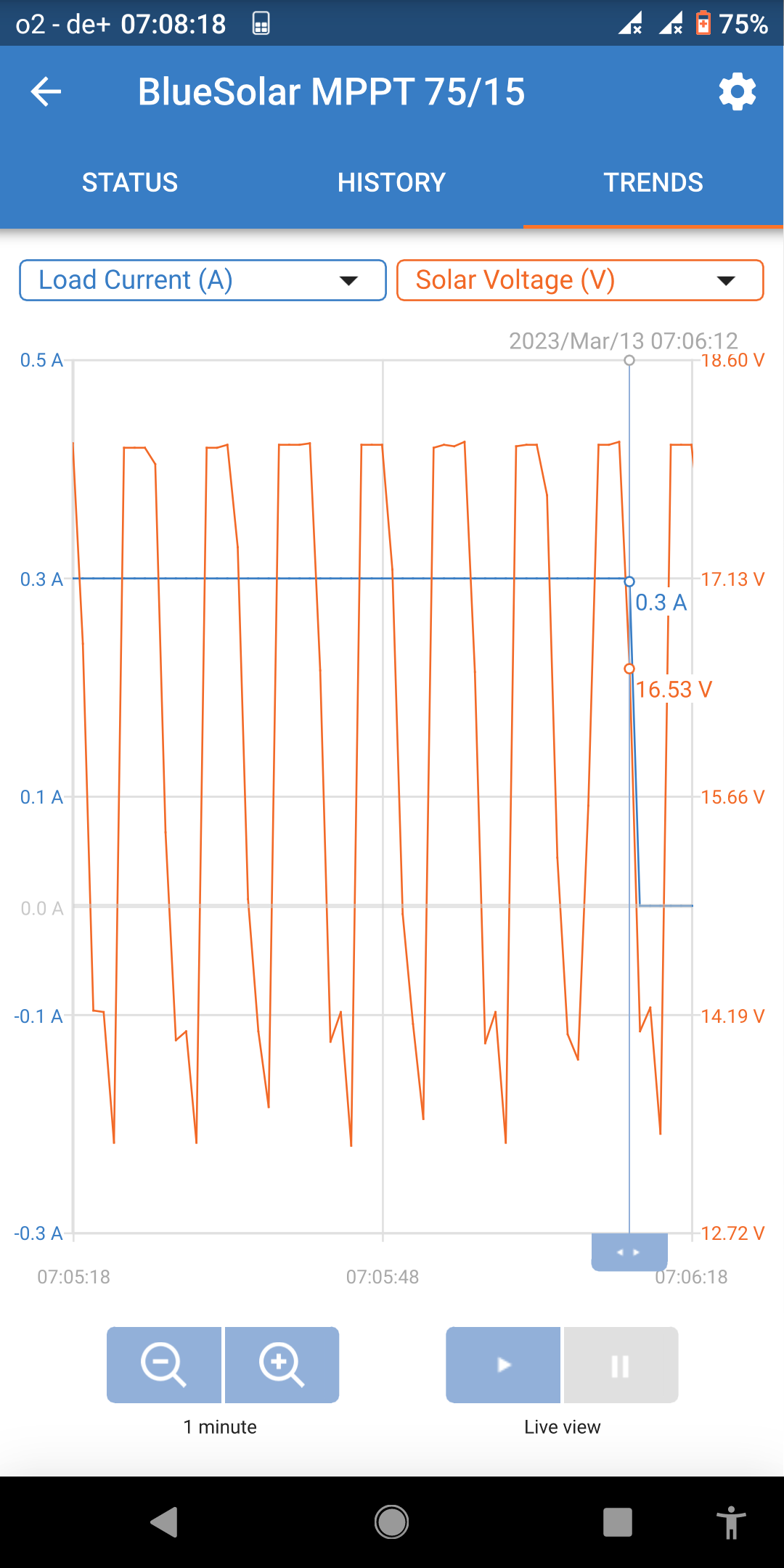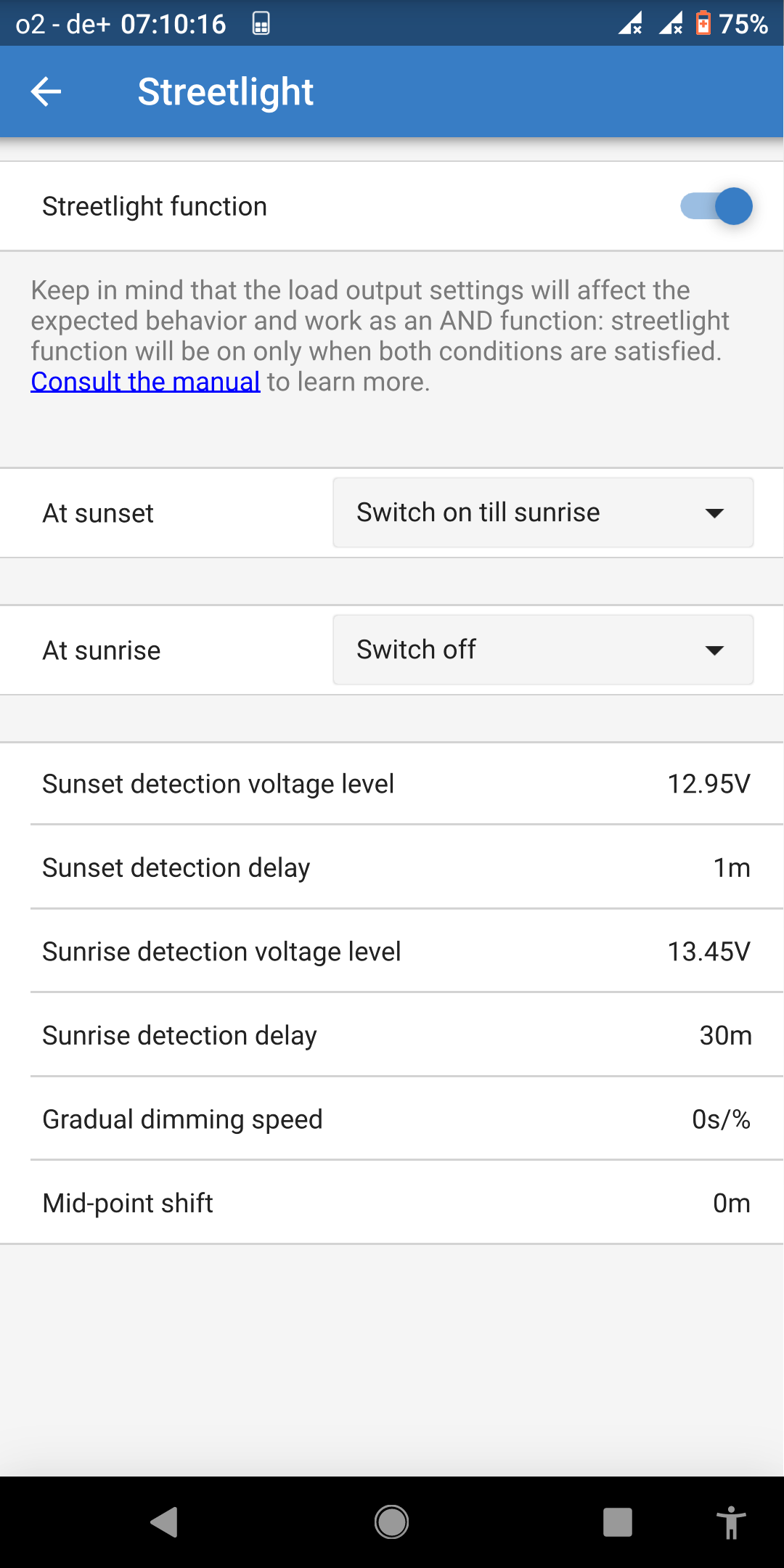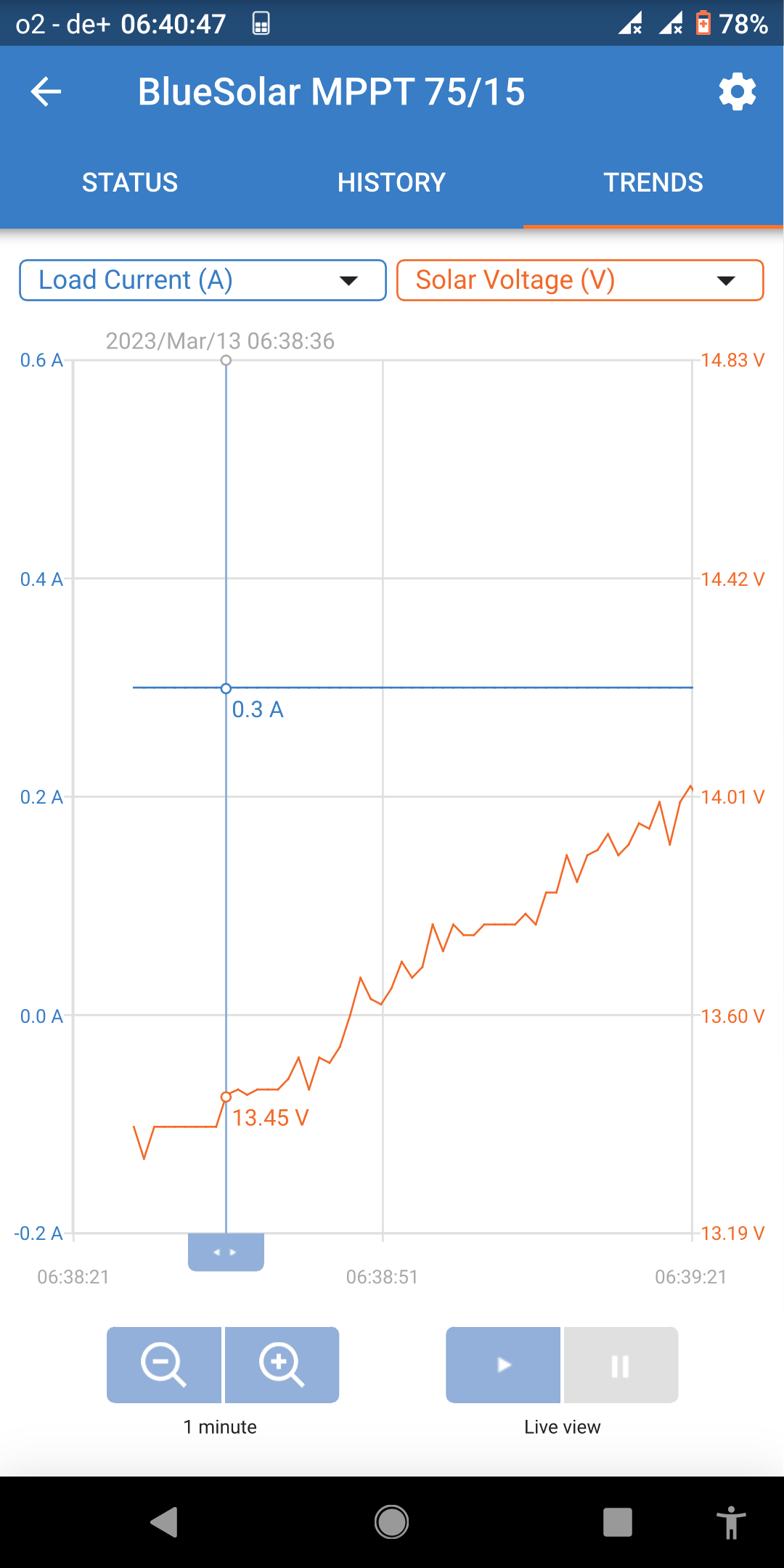UPDATE: The sunrise switch-off delay used to be a bit short but today it was late by an hour! See below.
I use the load output of my BlueSolar MPPT 75/15 to power my anchor light and it is set with a 30 minutes sunrise detection delay using the Streetlight function. It works as expected except for the delay being somewhat short. As can be seen in the screenshots in February 13th the sunrise detection voltage was reached at 06:38:37 and the load output is switched off at 07:06:12.
My questions are by which means are the delays enforced and what accuracy can I expect?
 Threshold is reached at 06:38:37 …
Threshold is reached at 06:38:37 …
 … load output is off at 07:06:12
… load output is off at 07:06:12
 Streetlight function configured values
Streetlight function configured values
 Streetlight sunrise switch-off overdue by an hour
Streetlight sunrise switch-off overdue by an hour

